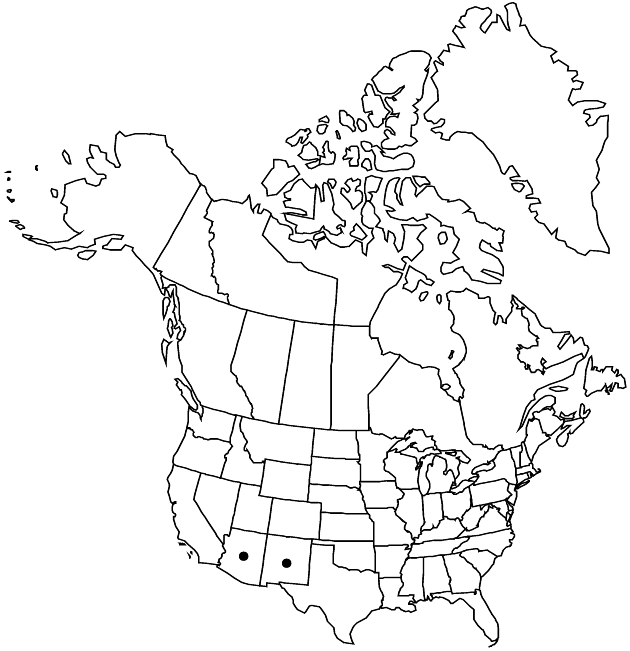Ageratum corymbosum
Cent. Observ. Bot., no. 85. 1806.
Perennials or subshrubs, 30–100 cm (fibrous-rooted). Stems erect to basally decumbent, puberulent to minutely strigoso-hispid. Leaf-blades ovate to rhombic-lanceolate, 3–8 × 1–3.5 cm, margins toothed, abaxial faces usually puberulent, sometimes minutely strigoso-hispid, densely glanddotted. Peduncles finely puberulent (not pilose), eglandular. Involucres 5–6 mm. Phyllaries narrowly lanceolate (0.4–0.7 mm wide, innermost often 1–1.5 mm longer than outer), finely puberulent, eglandular, tips green or purplish, filiform. Corollas usually blue to lavender, sometimes white. Cypselae glabrous; pappi usually crowns of connate scales with erose margins or tubular portions longer than divisions, rarely with 1 or more awnlike lobes. 2n = 20, 30, 40.
Phenology: Flowering Jul–Oct.
Habitat: Crevices, ledges, cliffs, other rocky sites in canyons, along streams, in desert grasslands, oak-agave, oak, oak-juniper, and pine-oak woodlands
Elevation: (900–)1200–1900 m
Distribution

Ariz., N.Mex., Mexico
Discussion
Habitat information came mostly from collections from Sonora and Chihuahua, Mexico. Ageratum corymbosum grows in all Mexican states except for the extreme southeast. It has been included in various summaries as occurring in Texas; as noted by D. S. Correll and M. C. Johnston (1970), those records apparently were based on a collection by Charles Wright from southwestern New Mexico.
Varieties and forms of Ageratum corymbosum have been recognized (e.g., M. F. Johnson 1971; R. McVaugh 1984). McVaugh wryly noted that extremes of these intergrading infraspecific entities “can be recognized with a little imagination.” The form that reaches the United States (with ovate-lanceolate leaves) is var. jaliscense.
Selected References
None.
Lower Taxa
"fine" is not a number.
